For those seeking adventure without leaving the comfort of home, extremophile board games, including the exciting new Extremophile Games, offer the perfect solution. These tabletop experiences transport players to Earth’s most inhospitable environments, challenging them to survive and thrive where few dare to venture. Whether scaling frozen mountains, crossing scorching deserts, or exploring volcanic landscapes, these Extremophile Games test your strategic thinking and resource management skills while teaching about our planet’s most extreme habitats.
The Appeal of Extreme Environment Games
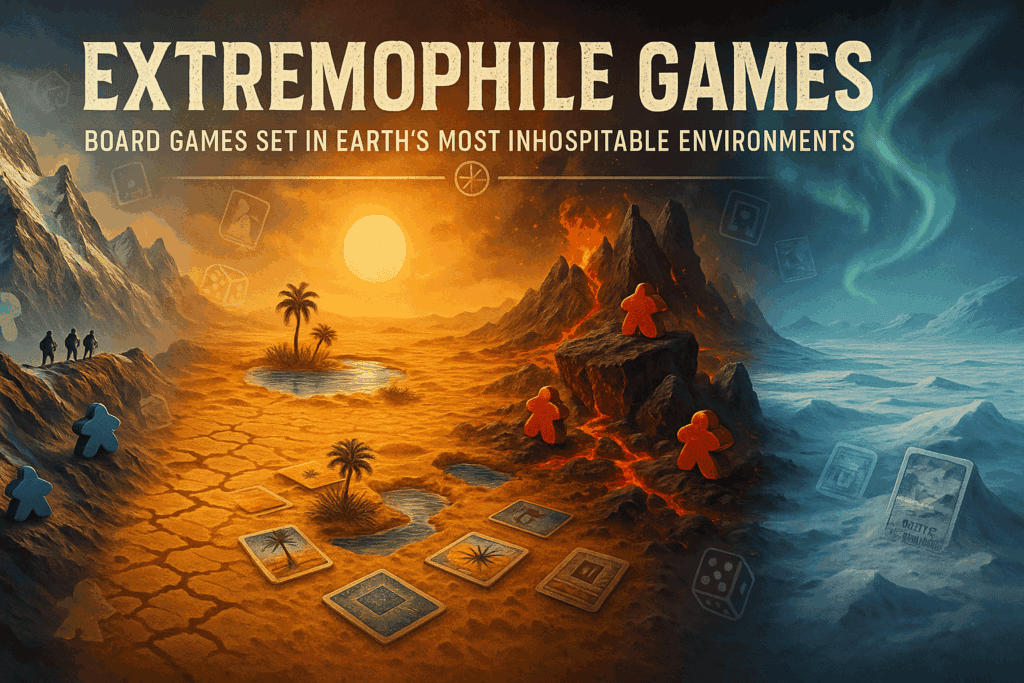
With the emergence of Extremophile Games, players can now delve even deeper into these extreme environments, discovering unique challenges and strategies.
Extremophile Games have become a sensation among board game enthusiasts, offering unique challenges and educational value. Players can immerse themselves in the world of Extremophile Games, where survival is paramount, and knowledge of extreme habitats enhances gameplay.
Board games set in harsh environments offer a unique blend of education and entertainment. They allow players to experience the thrill of survival while learning about the ecological and geographical challenges that make these environments so fascinating. The tension created by limited resources, unpredictable conditions, and the constant threat of disaster creates gaming experiences unlike any other. Extremophile Games provide a thrilling way to experience and appreciate the fragility of life in extreme environments.
High-Altitude Survival: Conquering Earth’s Tallest Peaks
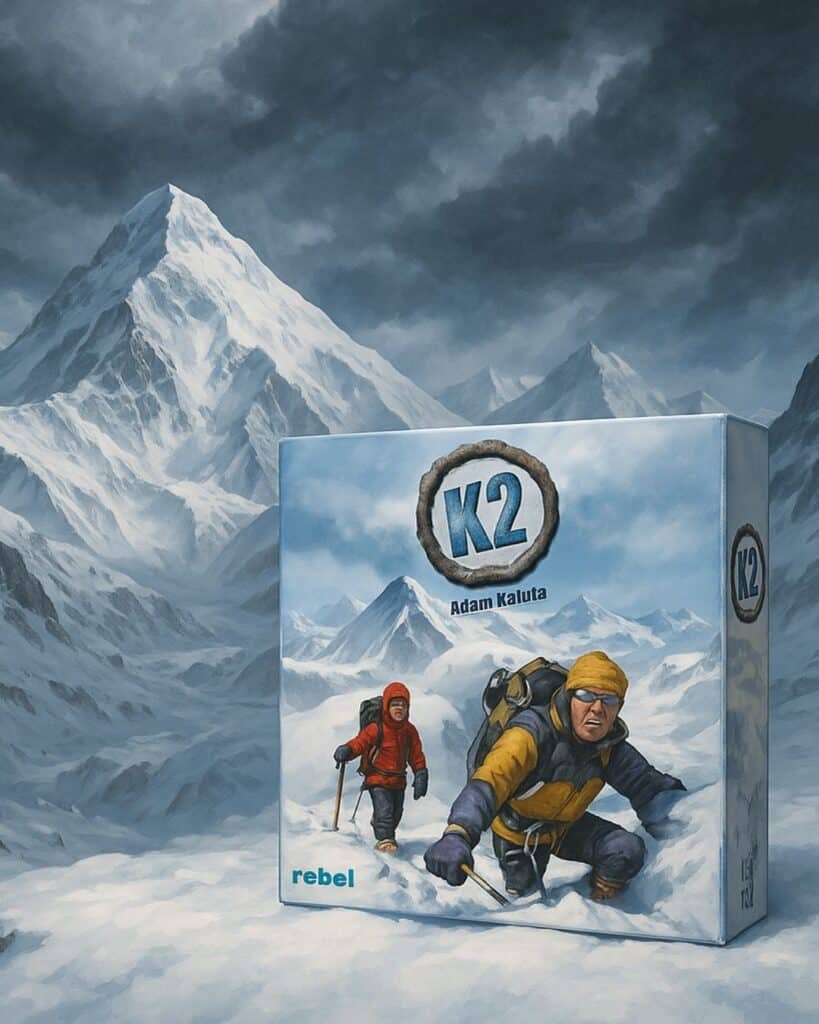
K2: The Savage Mountain
Named after the world’s second-highest peak, K2 puts players in the boots of mountaineers attempting to scale one of Earth’s most deadly mountains. This game perfectly captures the oxygen-deprived struggle of high-altitude climbing, where each step requires careful planning and resource management.
The game’s weather mechanics are particularly impressive—the mountain can turn deadly in an instant as storms roll in, forcing players to make life-or-death decisions about whether to push forward or retreat to safety. With limited oxygen supplies and deteriorating weather conditions, K2 creates a genuine sense of the precariousness of high-altitude expeditions.
Everest: The Highest Summit
Through gameplay, enthusiasts of Extremophile Games gain insight into real-world challenges faced by adventurers.
While K2 focuses on the race to summit and return safely, Everest delves deeper into the logistics and teamwork required for Himalayan expeditions. Players must coordinate Sherpas, manage supply chains, and acclimatize properly before making their final push to the world’s highest point.
Engaging with Extremophile Games allows players to understand the complexities of survival in diverse ecosystems.
What makes Everest stand out is its attention to historical accuracy and educational value. The game incorporates real mountaineering techniques and challenges, making it both entertaining and informative for those fascinated by extreme adventure sports.
Desert Survival: Thriving in Earth’s Driest Places

Atacama: Life Finds a Way
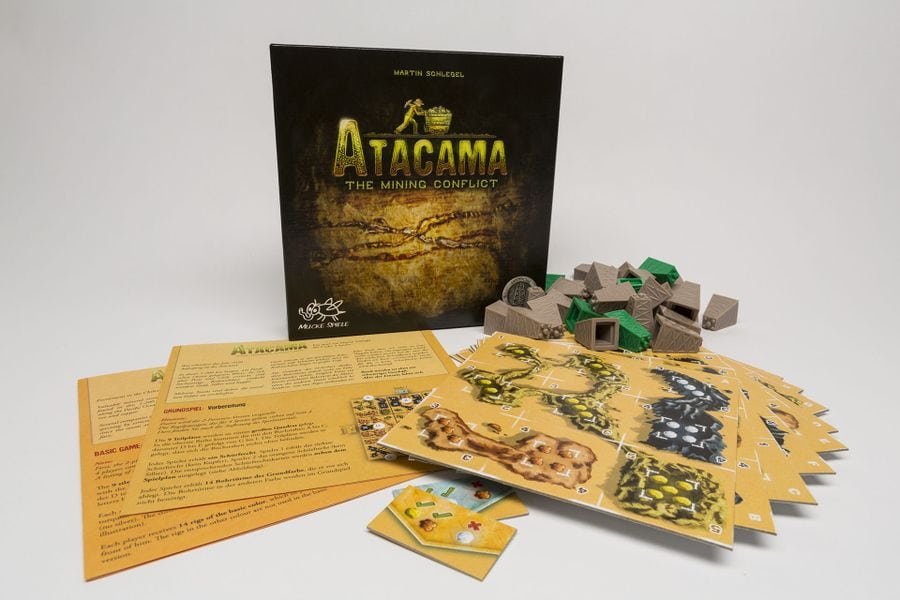
Set in the world’s driest non-polar desert, Atacama challenges players to establish sustainable colonies in an environment that receives less than 15mm of rainfall annually. The game brilliantly illustrates how life adapts to extreme conditions, with players researching water harvesting technologies and developing specialized agriculture.
The day-night temperature swing mechanic (where board conditions change dramatically between rounds) recreates the desert’s extreme temperature fluctuations. Players must balance immediate survival needs against long-term sustainability goals—much like real desert communities do.
Forbidden Desert: Shifting Sands
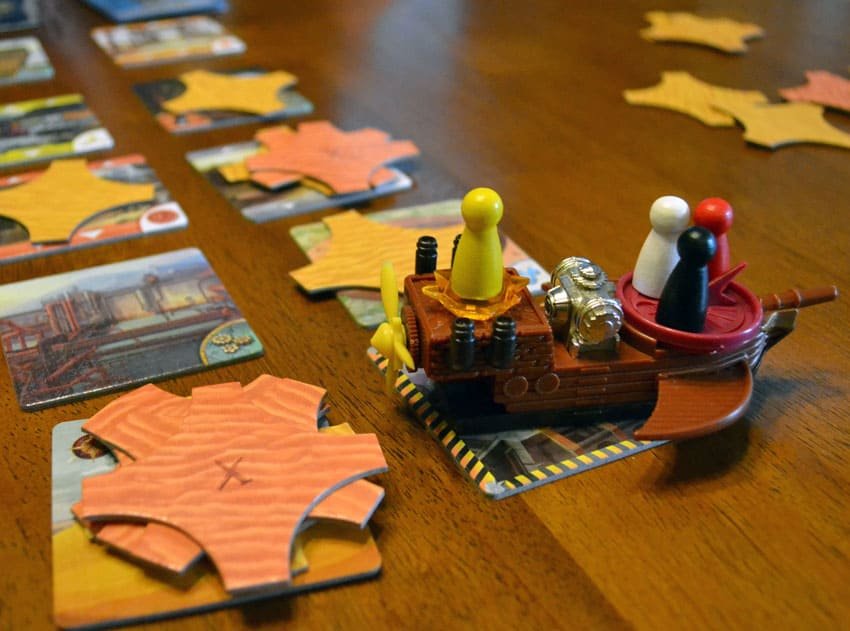
Players experience the excitement of Extremophile Games while learning environmental science concepts through gameplay.
In Forbidden Desert, players become adventurers stranded after a crash landing, racing against time to find parts for their airship before succumbing to thirst. The constantly shifting sand tiles create a dynamic environment that mirrors the unpredictable nature of desert terrain.
The game’s innovative thirst mechanic forces players to prioritize finding water while searching for escape parts, creating genuine tension and forcing difficult resource allocation decisions that mirror real survival scenarios.
Volcanic Challenges: Games of Fire and Ash
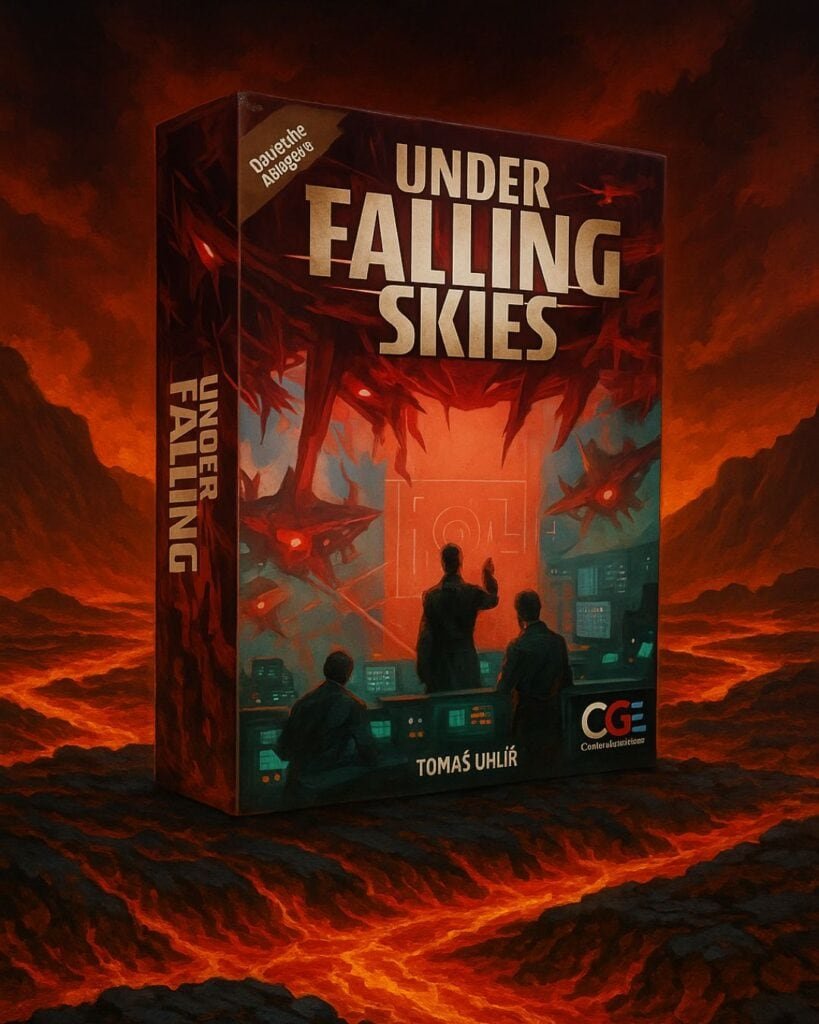
Under Falling Skies
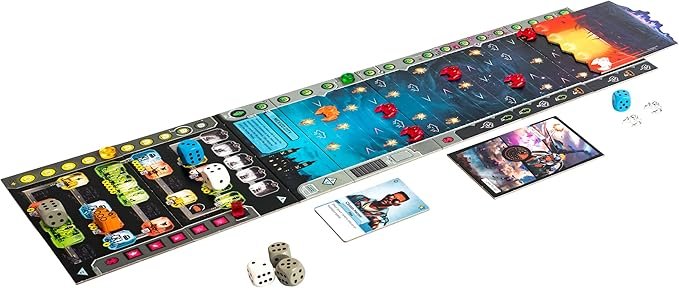
Under Falling Skies places players in an underground base beneath an active volcanic region, defending against extraterrestrial threats while managing the constant danger of volcanic activity. The dice-placement mechanics represent the unpredictable nature of volcanic systems, with eruptions potentially disrupting carefully laid plans.
The game excels at creating the claustrophobic feeling of being trapped underground with multiple threats closing in—both from above and below. Players must constantly evaluate risk, deciding when to venture to the surface despite ash and toxic gases.
Flashpoint: Volcano Island
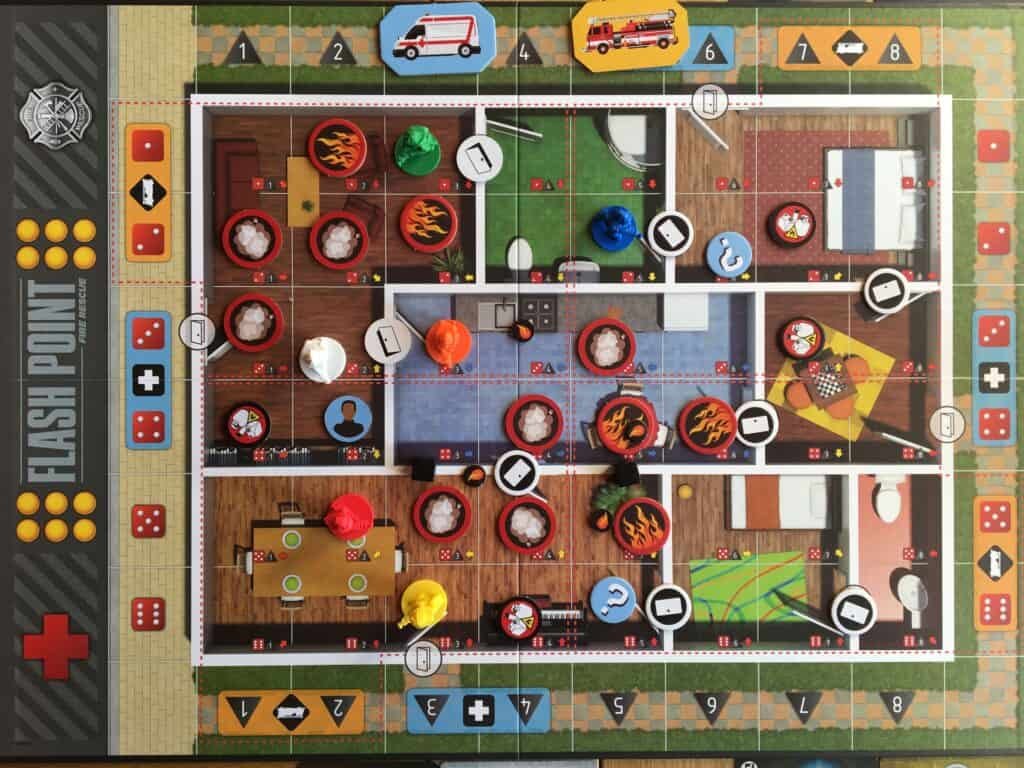
This cooperative game challenges firefighters to rescue civilians from structures threatened by an active volcano. Players must navigate collapsing buildings, unpredictable lava flows, and toxic gas emissions while prioritizing rescue operations.
The game’s evolving disaster mechanics create a sense of escalating danger that mirrors the unpredictable nature of volcanic events, teaching players about volcanic hazards while creating an intensely challenging gaming experience.
READ : The Best Cooperative Board Games
Arctic Wastelands: Surviving the Frozen North
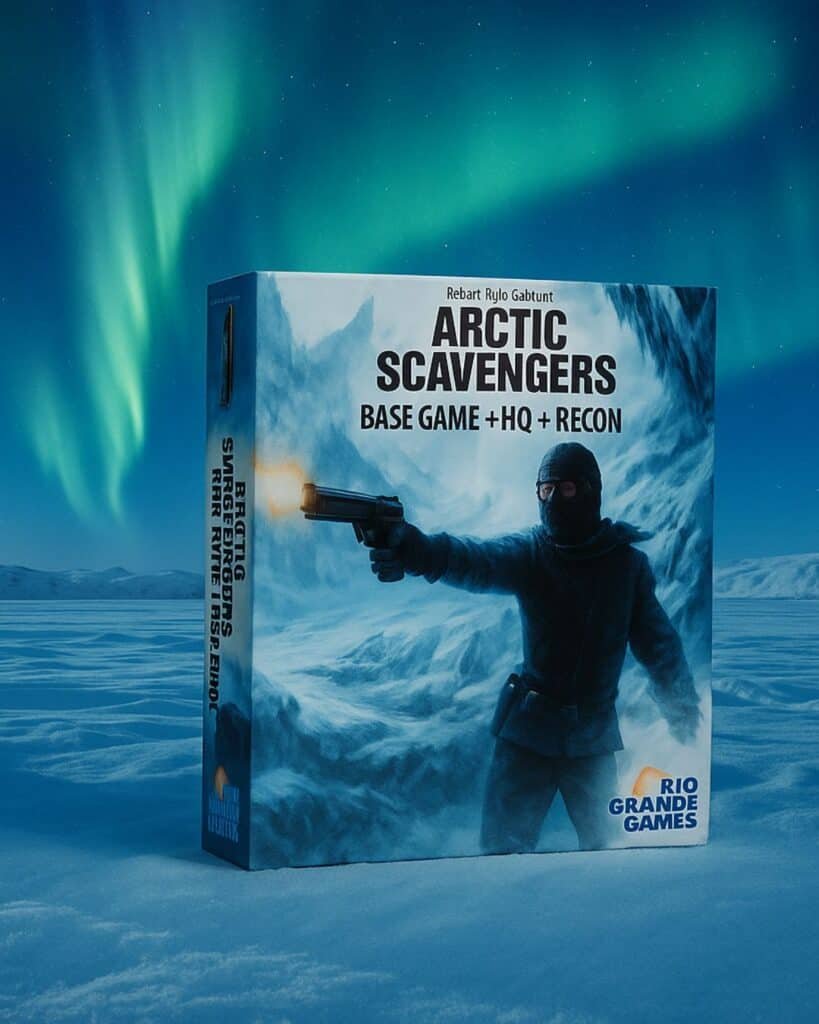
Understanding the dynamics of nature through Extremophile Games enhances awareness of ecological balance.
Arctic Scavengers
In the post-apocalyptic frozen wasteland of Arctic Scavengers, players lead tribes struggling to survive in a permanently winter-locked world. The game’s resource scarcity and deck-building mechanics perfectly capture the desperate scramble for supplies that would characterize survival in such extreme conditions.
What makes Arctic Scavengers special is its harsh “junk pile” mechanic, where players literally dig through a pile of cards seeking useful items—mirroring the desperate scavenging that would be necessary in a resource-depleted frozen world. The game doesn’t romanticize survival; it presents it as the difficult, often morally challenging endeavor it would truly be.
Dead of Winter
Through Extremophile Games, players learn to navigate challenges faced by life in extreme conditions.Extremophile Games challenge players to adapt their strategies based on changing environments.
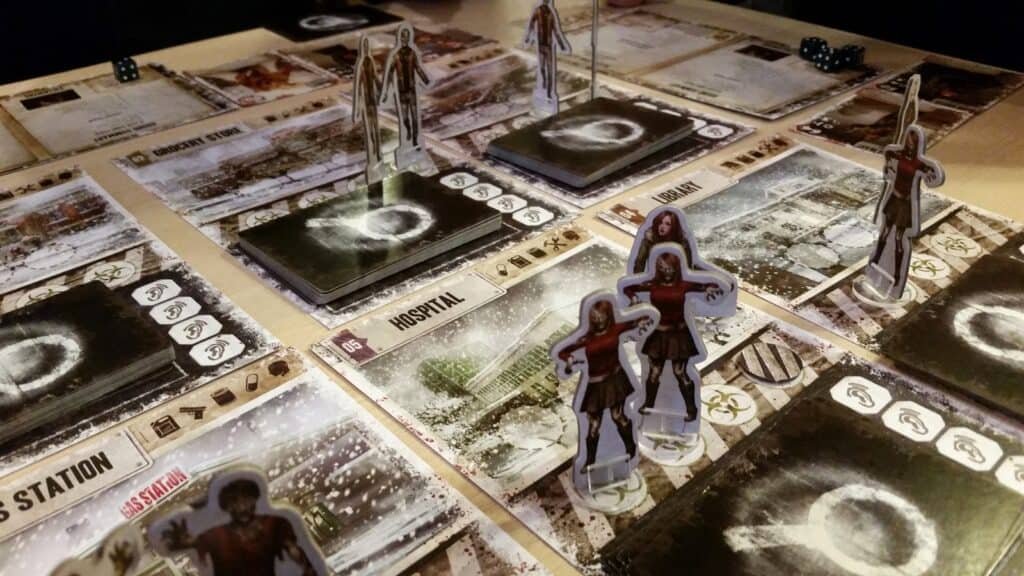
Extremophile Games invite players to explore the survival strategies of life in the harshest conditions. While not exclusively set in the Arctic, Dead of Winter captures the isolation and resource challenges of surviving in freezing conditions. The game’s exposure damage and frostbite mechanics realistically model the dangers of extreme cold, where even brief exposure can have deadly consequences.
Players are drawn to the unique appeal of Extremophile Games, which combine education with entertainment.
The colony’s constant battle against plummeting temperatures forces players to make difficult decisions about fuel usage, shelter improvements, and when to risk venturing out—creating genuine tension that mirrors real survival scenarios in frozen environments.
READ: The Absolute Best Strategy Board Games
Terraforming: Transforming Hostile Worlds
Terraforming Mars
Terraforming Mars stands as the definitive game about transforming inhospitable environments into habitable ones. Players compete as corporations working to make the Red Planet livable through raising temperatures, creating oceans, and establishing atmosphere—all challenges that mirror the real scientific hurdles of planetary transformation.
The game’s meticulous attention to scientific accuracy makes it both entertaining and educational. Players learn about concepts like greenhouse gas effects, atmospheric composition, and ecological succession while competing to leave their mark on Mars.
Ares Expedition
As a streamlined version of Terraforming Mars, Ares Expedition maintains the core themes of transforming hostile environments while introducing faster gameplay. The game’s phase selection mechanics illustrate how different aspects of terraforming (building infrastructure, managing finances, researching technologies) must work in concert to overcome extreme environmental challenges.
Designing Games About Even More Extreme Environments
Deep Sea Thermal Vents
Board games centered around deep-sea hydrothermal vents represent an untapped frontier in extreme environment gaming. These remarkable ecosystems exist in crushing depths, complete darkness, and temperatures that swing from near-freezing to above boiling within inches.
A game focusing on these environments could incorporate mechanics around:
- Pressure management for submersibles
- Harvesting unique biological compounds from extremophile organisms
- Competing scientific research objectives
- Managing oxygen and power supplies at extreme depths
Players could take the roles of marine biologists, resource extraction companies, or conservationists, each with different objectives related to these delicate yet hostile environments.
Radioactive Exclusion Zones
The abandoned areas around nuclear disaster sites represent another fascinating setting for extremophile games. These environments feature invisible dangers, deteriorating infrastructure, and the slow reclamation of human spaces by nature.
Game mechanics could include:
Let the adventure begin with Extremophile Games, where every session brings new learning experiences. Consider trying Extremophile Games for a fun and educational gaming experience.
Extremophile Games blend excitement with knowledge, making them a favorite among board game fans.
- Radiation exposure tracking
- Limited time in high contamination zones
- Documentation of ecosystem recovery
- Salvage operations balanced against safety concerns
Such games could provide powerful educational experiences about both the dangers of radiation and the remarkable resilience of nature in reclaiming abandoned spaces.
Conclusion: Why We’re Drawn to Inhospitable Places
Board games set in Earth’s most extreme environments satisfy our innate curiosity about places most of us will never visit. They allow us to experience the thrill of survival and the wonder of adaptation from our living rooms. These games do more than entertain—they educate players about the remarkable diversity of our planet and the ingenuity required to survive its most challenging conditions.
As climate change continues to alter our world, understanding extreme environments becomes increasingly important. Board games that accurately represent these inhospitable places help build appreciation for Earth’s remarkable diversity and the delicate balances that make survival possible even in the harshest conditions.
The next time you’re looking for a gaming experience that combines challenge, education, and adventure, consider visiting one of Earth’s extremes through tabletop gaming. Whether you’re scaling K2, crossing the Atacama, or surviving an Arctic winter, these games offer experiences that are as informative as they are entertaining.
Frequently Asked Questions
Q: What makes a good extreme environment board game?
A: The best extremophile games balance realistic environmental challenges with engaging gameplay. They should educate players about genuine survival challenges while remaining entertaining. Look for games with unique mechanics that represent specific environmental hazards rather than generic survival games with an extreme theme pasted on.
Q: Are these games scientifically accurate?
A: Many extremophile games prioritize scientific accuracy, particularly educational titles like Terraforming Mars. However, most games simplify certain aspects for playability. The best titles strike a balance between realism and entertainment, using scientifically accurate challenges as the foundation for engaging gameplay mechanics.
Q: Can children learn about extreme environments through these games?
A: Many extremophile games are accessible to younger players, particularly those designed with education in mind. Games like Forbidden Desert offer simplified survival mechanics suitable for ages 10+, while still teaching valuable lessons about resource management and environmental adaptation.
Q: What’s the most challenging extreme environment board game?
A: K2 is widely considered one of the most difficult extremophile games due to its unforgiving oxygen and weather mechanics. Players often lose team members or entire expeditions, mirroring the real mountain’s notorious difficulty and 25% fatality rate among climbers.
Q: Are there cooperative extreme environment games?
A: Many extremophile games feature cooperative play, recognizing that survival in harsh conditions often depends on teamwork. Titles like Forbidden Desert, Dead of Winter, and Flashpoint: Volcano Island all feature cooperative mechanics where players must work together to overcome environmental challenges.
Q: Where can I learn more about real extreme environments?
A: For those whose interest is piqued by these games, resources like National Geographic’s Extreme Earth series, NASA’s Earth Observatory website, and the BBC’s Planet Earth documentaries offer excellent information about the real-world environments these games simulate.






